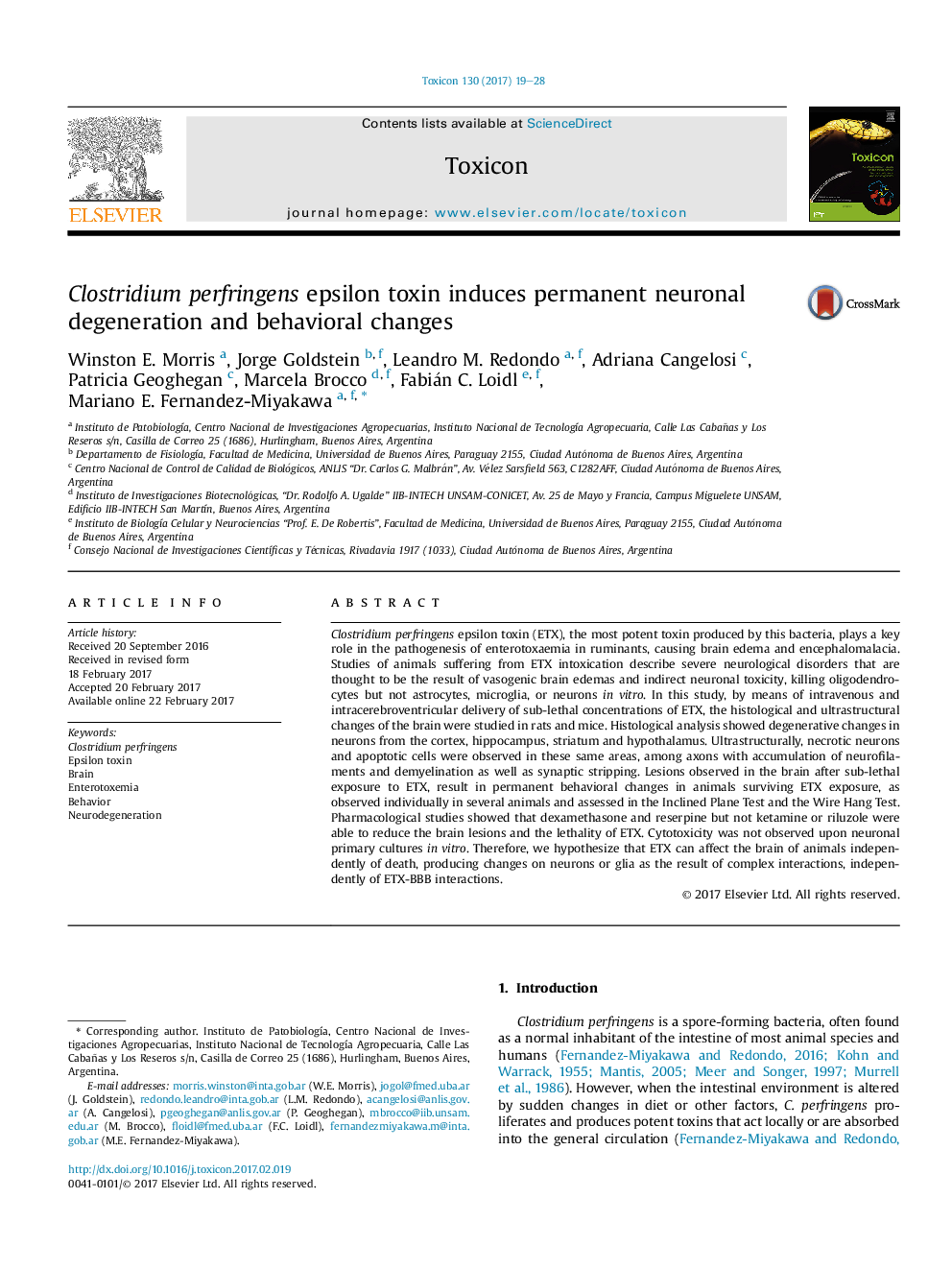| کد مقاله | کد نشریه | سال انتشار | مقاله انگلیسی | نسخه تمام متن |
|---|---|---|---|---|
| 5519307 | 1544106 | 2017 | 10 صفحه PDF | دانلود رایگان |

- I.V. and I.C.V. delivery of sub-lethal doses of ETX causes neurodegenerative changes in different areas of the brain.
- ETX associated nervous alterations result in permanent behavioral changes.
- ETX has no cytotoxic effect on neuronal primary cultures in vitro.
- Dexamethasone and reserpine reduce brain lesions and lethality of ETX.
Clostridium perfringens epsilon toxin (ETX), the most potent toxin produced by this bacteria, plays a key role in the pathogenesis of enterotoxaemia in ruminants, causing brain edema and encephalomalacia. Studies of animals suffering from ETX intoxication describe severe neurological disorders that are thought to be the result of vasogenic brain edemas and indirect neuronal toxicity, killing oligodendrocytes but not astrocytes, microglia, or neurons in vitro. In this study, by means of intravenous and intracerebroventricular delivery of sub-lethal concentrations of ETX, the histological and ultrastructural changes of the brain were studied in rats and mice. Histological analysis showed degenerative changes in neurons from the cortex, hippocampus, striatum and hypothalamus. Ultrastructurally, necrotic neurons and apoptotic cells were observed in these same areas, among axons with accumulation of neurofilaments and demyelination as well as synaptic stripping. Lesions observed in the brain after sub-lethal exposure to ETX, result in permanent behavioral changes in animals surviving ETX exposure, as observed individually in several animals and assessed in the Inclined Plane Test and the Wire Hang Test. Pharmacological studies showed that dexamethasone and reserpine but not ketamine or riluzole were able to reduce the brain lesions and the lethality of ETX. Cytotoxicity was not observed upon neuronal primary cultures in vitro. Therefore, we hypothesize that ETX can affect the brain of animals independently of death, producing changes on neurons or glia as the result of complex interactions, independently of ETX-BBB interactions.
Journal: Toxicon - Volume 130, May 2017, Pages 19-28